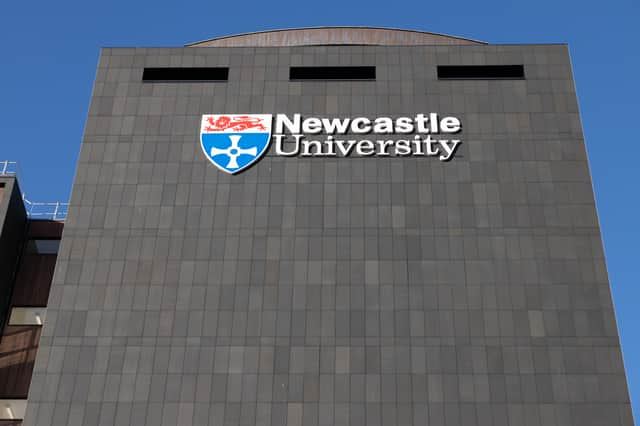Data highlights class inequality among Newcastle city students


The gap between poorer Newcastle students and their more affluent peers attending university has risen, figures show.
The Sutton Trust said the university access gap across England – which is as large now as it was 14 years ago – is evidence of "stubborn and ingrained inequalities" in the education system.
Advertisement
Hide AdAdvertisement
Hide AdData from the Department for Education shows that of 552 students in Newcastle who received free school meals at the age of 15, 124 (22.5%) were at university in 2019-20 – down from 24.9% the year before.
Of 1,858 other pupils in the area not on free school meals, 47.8% were studying in higher education at the age of 19, which was up from 47.4% in 2018-19.
This meant that the progression rate gap between poorer pupils and non-disadvantaged students rose to 25.4 percentage points last year – up from 22.5 in 2018-19.
Across England, 26.6% of pupils who received free school meals at age 15 were participating in higher education in 2019-20, compared to 45.7% of those who did not receive meals.
Advertisement
Hide AdAdvertisement
Hide AdAt 19.1 percentage points, this gap is the widest it has been since 2005-06, and varies significantly throughout the country.
The Sutton Trust, which campaigns for equal access to high quality education, called for further Government funding to address the problem, as well as more support from universities for low-income students.
James Turner, chief executive of the charity, added: "The fact that the university access gap for children on free school meals has not closed at all in the past decade, shows just how stubborn and ingrained inequalities are in our system.
"The Covid-19 pandemic means that the divide between disadvantaged students and their classmates is likely to become even wider, but there is an urgency to act now to prevent the gaps widening still further.”
Advertisement
Hide AdAdvertisement
Hide AdThe gap between the numbers of disadvantaged and non-disadvantaged students entering more selective universities also rose to 8.0 percentage points in 2019-20 in England.
In Newcastle, just 4% of pupils eligible for free school meals progressed to high-tariff institutions – universities with higher entry requirements – by the age of 19, compared with 14.7% of those not eligible.
Geoff Barton, general secretary of the Association of School and College Leaders, said: "The educational attainment gap between disadvantaged children and their peers starts early in life and then continues to widen.
“Money is not the whole answer, but it is important nonetheless and there has to be more Government investment in early years education, schools and colleges, and in tackling child poverty.”
Advertisement
Hide AdAdvertisement
Hide AdA DfE spokesman said a greater proportion of disadvantaged pupils are going to university than ever, but that there is more to do.
He added: “Ensuring that everyone has the opportunity to access a world-class education remains a top priority, and we expect universities to do all they can to help disadvantaged students.”
Comment Guidelines
National World encourages reader discussion on our stories. User feedback, insights and back-and-forth exchanges add a rich layer of context to reporting. Please review our Community Guidelines before commenting.